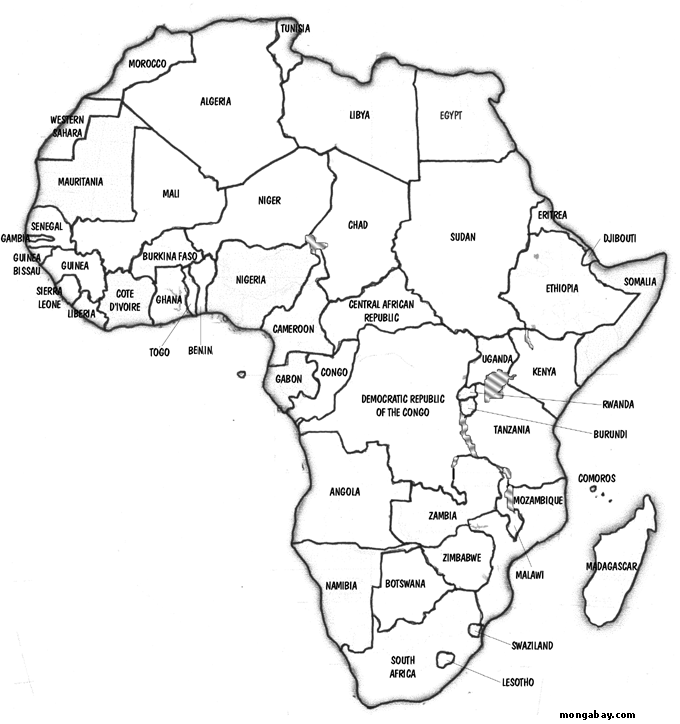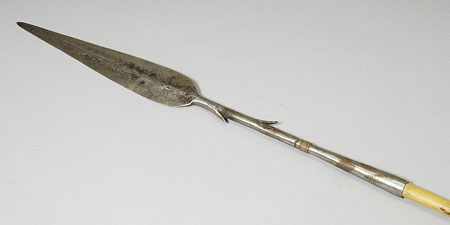



The LUO Tribe of South Sudan
The Luo of Bhar El-Ghazal Region in South Sudan are descendant of Dimo the elder brother to Niykango. According to the Luo’s myths and oral history, Dimo was the direct brother who went into confrontations with his younger brother Niykango over “royal spears”. A Royal Spears in the Luo custom, only carried by the head of the family, designated Chief or a King (Known as Ruoth in Luo language). The Ruoth, or the king in his turn recommends one of the family members that would take over the royal spears after his death. The luo in Bhar el Ghazal still practice this custom to the present date. The confrontations between Dimo and Niykango subsequently led to the separation and migration of two brothers Niykango and Gilo to Upper Nile Sates in South Sudan (Stefano P. St. Andrea (1938).
According to 1983 census the Luo population numbering between 200,000 to 300,000 people in Bahr El-Ghazal region. The Luo are found in South Sudan Region, north of Wau as far as Gett,, Udici, Gana, Kangi, Barmayen, Fongo up to Aweil and Southeast of Wau which includes surrounding suburbs of southeast of Wau, Pa-waya, Wadh-allelo, Barwoul, Pambili (Umbili), Aya Kuajiena, Dang-Achak, Mapel, (1938). In the Western Wau includes, Getongo, Bar-Akohl, Pa-rehan, and Kiyango. Other areas of their settlement include Yabulo in Raja County.
Locals (Dinka) in Bhar el-Ghazal Region South Sudan call the Luo’s as Jur Chol; a nick name which means “black stranger”. The Luo also refer to themselves as Luwo, Jo-luoi, and are classified as Nilo-Saharan, Eastern Sudanic Nilotic, Western,, Northern, Luo, The Luo are also known for their positive attitudes toward learning different languages and dialects. However, some of the Luo speaks Arabic, Bongo English and Dinka. The Luo are forest agriculturists and iron miners. The Luo were forbidden during English rule (1855-1956) not to produce, or mine iron. Many who continue to practice mining were either jailed, or killed (1938).
Ronald Atkinson (1994) has cited the Iron working technique, and its practice among the Luo as early as 1000 B.C. (1994p58). Hence, the practice of Ironwork could be either one of elements that made this groups always choose their habitations around rivers and lakes. As such, it would be fair to say that archaeological work, and genetic analysis could further reveal more evidence of ethnicity, and ethnic relationship among the Nilotics in general, and the Luo groups or speakers in particular.
The Luo main sources of economy are black-smithing, agriculture, hunting, production of Bee Honey and fishing. They have perfected these trades over centuries and have shared their knowledge with neighbouring ethnic groups. Their knowledge of geology and geography has helped them in surviving through their migration and settlement in new territories. It has also helped them co-exist with, and assimilate other ethnic groups into Luo groups in East Africa. The Luo mainly believe in traditional African religion, which have strong links to Judaism (Old Testament) and Christianity. The Luo’s believe in prophets, and they use them as a link between them and the Most High (god). The Luo’s acknowledge their being in relations to their ancestors, thus receive their blessings through them. (Pace, Wanda: 1991)
Luo Bour: (Belanda-Bour):
The Luo Bori ethnic group, or Pa-Bor were actually part of the larger Luo clan of the Luwo Ethnic group of Bahr el Ghazal at some point. Their great grand father named (Utho) According to St. Andrea who left his group (Dimo Group) for undocumented reason and moved to live around Belanda Bviri western part of Western Bahr el-Ghazal Accordingly, the Luo Bour become known as “Belanda” a section of Bantu ethnic group in Southern Sudan. On that note however, the Luo Bori managed to keep their Luo language and the origin of their Luo ethnic traditional names. Pace, Wanda (1991). Belenda Biviri are ethnic Bantu group found in Bhar El-Ghazal South Sudan.
In addition, the Luo Bour has intermarried with Belanda Bviri and speak Beland Bivri Language as well. The Luo Bour linked to their great ancestor “Utho” a descendents of (Dimo) as a great grand father. The Luo Bour is classified as Nilo-Saharan, Eastern Sudanic, Nilotic, Luo, and Bor (St Andrea: 1938).
The Luo Bour group numbering about 8000 people according to (1983 SIL) census. They are found in Western Bahr El-Ghazal Region in villages of RaffiI, Tirga, Bazia, Ayo, Gitten and Taban. The Luo Bourare also found in the Western Equatoria Region of South Sudan in the Villages of Komai, Bangazegion and Tumbra (St Andrea: 938).
Thuri (Boodho/Shatt)
Thurri are Luo speaking group, and they are also referred to as Shilluk of Bahr El-Ghazal, as St Andrea (1938) thinks that they are part of Niykango/Shilluk group whom are left behind when the Niykango group migrated to Upper Nile Region where they are currently settled. Locals in South Sudan also refer to Luo Thurri tribe, as Jur-Shatt, Boodho or Jur-Chol. The Luo Thurri are found in South Sudan in areas between Wau and Aweil in Northern and Western Bhar El Ghazal. The Luo Thurri are also located between Jur and Lol rivers, on Raja Nyamlell road, and up to Wau-Deim Zubeir road. The Luo Thurri population was estimated at about 16,720 according to (2000 WCD) census. The Luo Thurri are also classified as Nilo-Saharan, Eastern Sudanic, Nilotic, Luo, Thuri (1938).
The Luo Thuri main source of economy is agriculture, fishing, hunting and Honey Bees production. Gilley, Leoma (2004). The Luo Thuri are best known as professional hunters and cross country long distance walkers (2004).
(c) madut, 2008
- Home
- ABOUT THE LUO OF BG
- Community Events
- CURRENT PROJECTS
- HOME NEWS
- DIASPORA
- LUO OF BHAR EL GHAZAL IN AMERICA
- HISTORICAL PRESPECTIVES
- OPINIONS
- CULTURE
- LUO IN AFRICA
- LUO IN SUDAN
- THE EXECUTIVE COMMITTEE
- UPDATES AND COMMENTS
- GOVERNMENT OF WESTERN BHAR EL GHAZAL
- GOVERNMENT OF NORTHERN B G
- CONTACT US
- Conference 2009
- Luo Youth Connection
- Luo Business
- Southern Sudan TV LIVE
- Jo-Luo Internet RadioTV-Live
- Luo Community Conference 2016